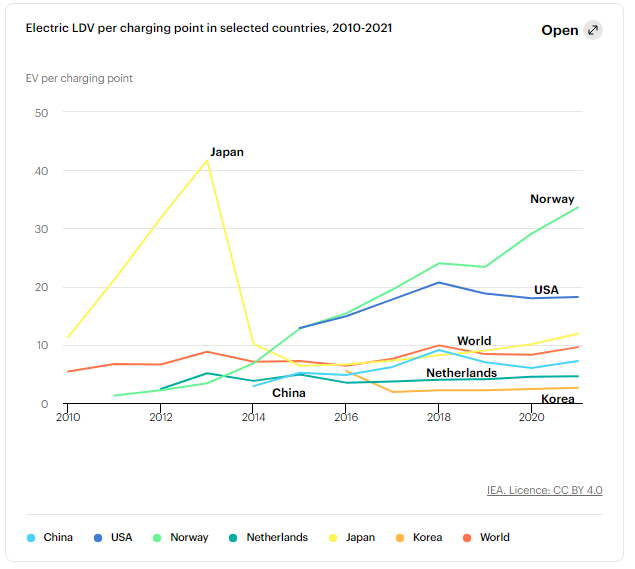NW-Bound
Give me a museum and I'll fill it. (Picasso) Give me a forum ...
- Joined
- Jul 3, 2008
- Messages
- 35,712
On the Web, there's a story about a Canadian getting frustrated with finding chargers for his Ford electric truck when trying to make a trip from Winnipeg to Chicago. This story is widely republished on many Web sites, so I will not bother to link it here.
But in following the story to other anecdotes of charger availability in Canada, I ran across a chart by IEA (International Energy Agency) showing the number of charging points per EV, listed by country.
I was surprised to see Norway having the least chargers at 33 EVs per charging point. Korea leads the list at 2 EVs per charging point.
Whoa! Norway, the country widely publicized as most friendly to EVs has the fewest public chargers.
When in Oslo 2 months ago, I did not count the percentage of EVs I saw on city streets, but was not impressed by what I saw. In fact, people in the city did not have cars. They took the bus. I did not travel to the Norwegian countryside to see for myself, but suspect that people with cars live out in the open country, and they have homes instead of apartments, and they charge their EVs at home. Perhaps they also have garages for their EVs, and that's how men and machines survive the winter.

But in following the story to other anecdotes of charger availability in Canada, I ran across a chart by IEA (International Energy Agency) showing the number of charging points per EV, listed by country.
I was surprised to see Norway having the least chargers at 33 EVs per charging point. Korea leads the list at 2 EVs per charging point.
Whoa! Norway, the country widely publicized as most friendly to EVs has the fewest public chargers.
When in Oslo 2 months ago, I did not count the percentage of EVs I saw on city streets, but was not impressed by what I saw. In fact, people in the city did not have cars. They took the bus. I did not travel to the Norwegian countryside to see for myself, but suspect that people with cars live out in the open country, and they have homes instead of apartments, and they charge their EVs at home. Perhaps they also have garages for their EVs, and that's how men and machines survive the winter.

Last edited:

